Pipeline detail
FM301
| Classification | Description |
|---|---|
| FM301 |
|
| Indication |
|
| Unmet Needs |
|
| Mechanism of Action |
|
| Efficacy |
|
| Market |
|
Indication
Resistant-pancreatic ductal adenocarcinoma
Pancreatic cancer is a mass (tumor mass) made up of cancerous cells in the pancreas. There are several types of pancreatic cancer, but ductal adenocarcinoma, which originates from pancreatic ductal cells, accounts for about 90%. The cause of pancreatic cancer has not yet been clearly identified and compared to other cancers, the pre-cancerous lesions that act as the cause of cancer are also not clear. Factors likely to cause pancreatic cancer include age over 45 years old, smoking history, history of head and neck, lung, and bladder cancer, long-term diabetes, and intake of fatty foods. Recently, it has been reported that the incidence of pancreatic cancer increases in chronic pancreatitis and some genetic diseases.
Unmet Needs
- In all-stage combined-pancreatic cancer patients, the 5-year survival rate is 9%.
- FOLFIRINOX and Gemcitabine/NAB-paclitaxel are administered as the first-line treatment for pancreatic cancer, but still, there are patients who are refractory to the treatment due to its cytotoxic effects to both normal and cancer cells.
- Immunohistochemistry analysis of Pancreatic 60 pancreatic cancer patients revealed that 55 % of the patients are characterized with high expression of HASPIN.
Mechanism of Action
1) HASPIN Inhibition
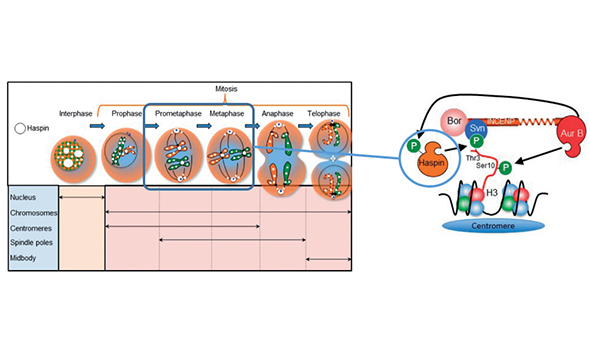


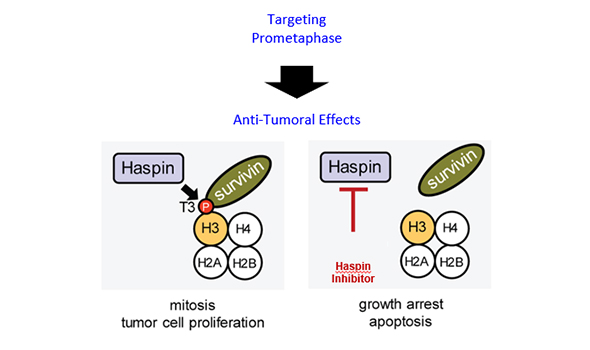

 2) Amplifying anti-cancer effects by simultaneous inhibition of major Onco-targets
2) Amplifying anti-cancer effects by simultaneous inhibition of major Onco-targets
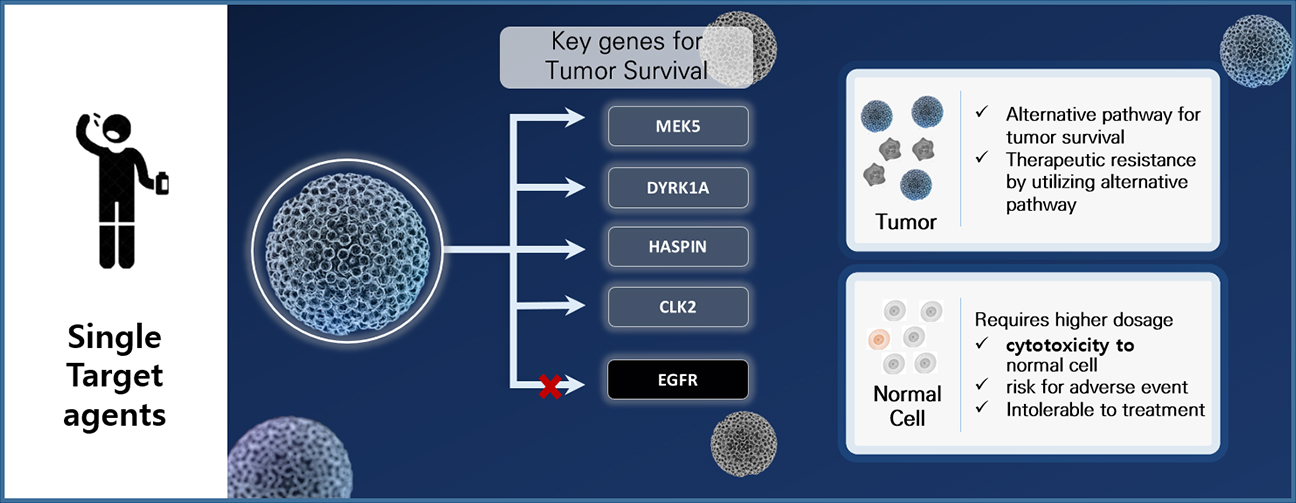


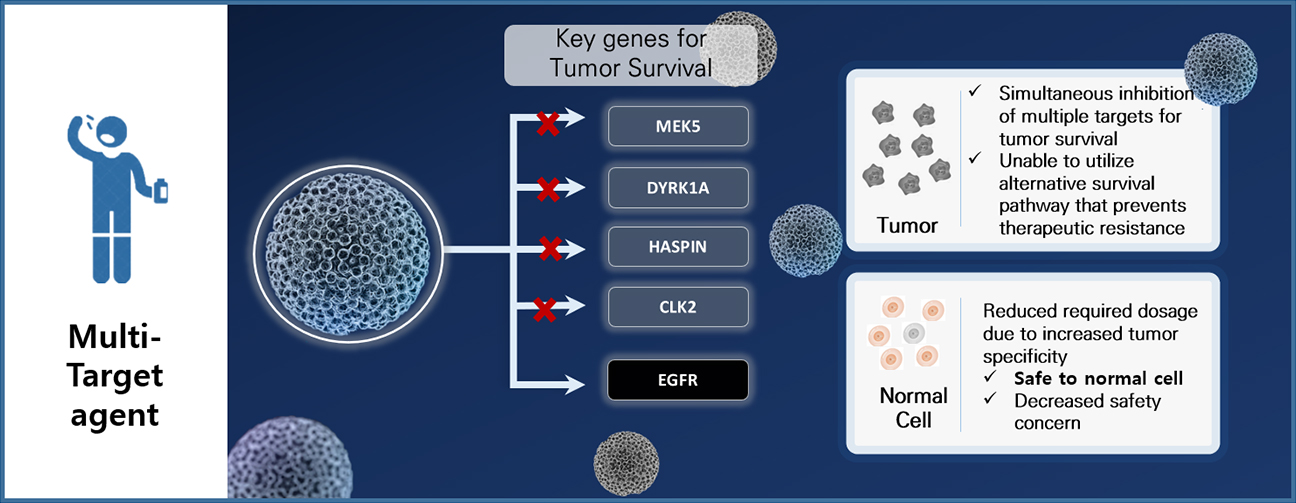


- ① Suppression of mitosis via inhibition of HASPIN
- ② Impaired mitosis leads to cell apoptosis












Efficacy
Inhibition of FUCCI Cell mitosis
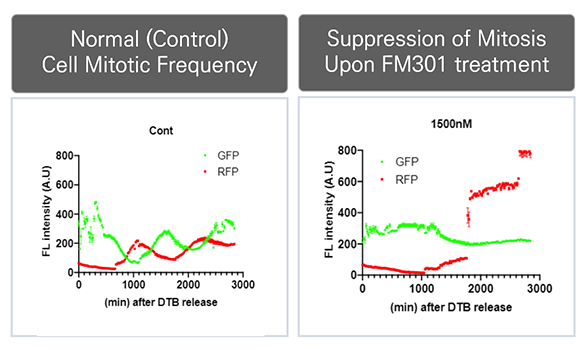


- FUCCI cells are genetically modified cells that emit green (M, G2, S) and red (G1) fluorescence at each stage of cell division.
- The more often the green and red intersection lines, the more actively dividing the cells.
- When FM301 was administered, it was confirmed that this progression of cell division was prevented



Robust anti-mitotic effects while no effects on normal cells
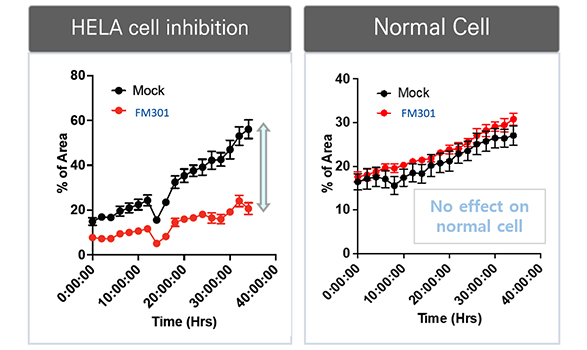


- When FM301 was administered to cancer cells having stem cell propensity (HELA), it showed an excellent inhibitory effect, whereas normal stem cells (hMSC) showed an insignificant effect on growth inhibition.
- This suggests the FM301’s tumor-specific effects have the potential to secure high safety.



Effect of FM301 in gemcitabine resistant pancreatic cancer cell
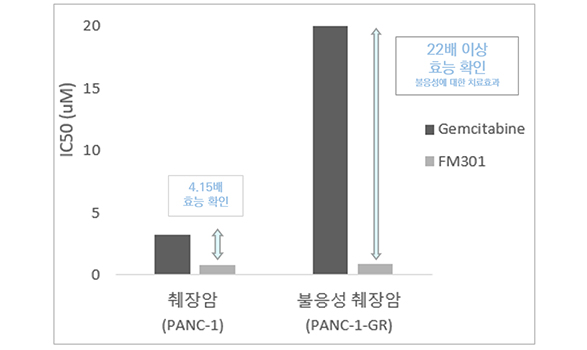

 Under evaluation of gemcitabine-refractory pancreatic cancer Xenograft
Under evaluation of gemcitabine-refractory pancreatic cancer Xenograft
- FM301 showed superior anti-cancer effects compared to the standard treatment (Gemcitabine) in pancreatic cancer cell lines.
- In addition, excellent anticancer effects were confirmed in refractory pancreatic cancer cell lines resistant to gemcitabine treatment.
- Currently, the efficacy of FM301 on cancer growth and metastasis in a mouse xenograft model of gemcitabine-refractory pancreatic cancer is being evaluated.


 Under evaluation of gemcitabine-refractory pancreatic cancer Xenograft
Under evaluation of gemcitabine-refractory pancreatic cancer Xenograft
Market
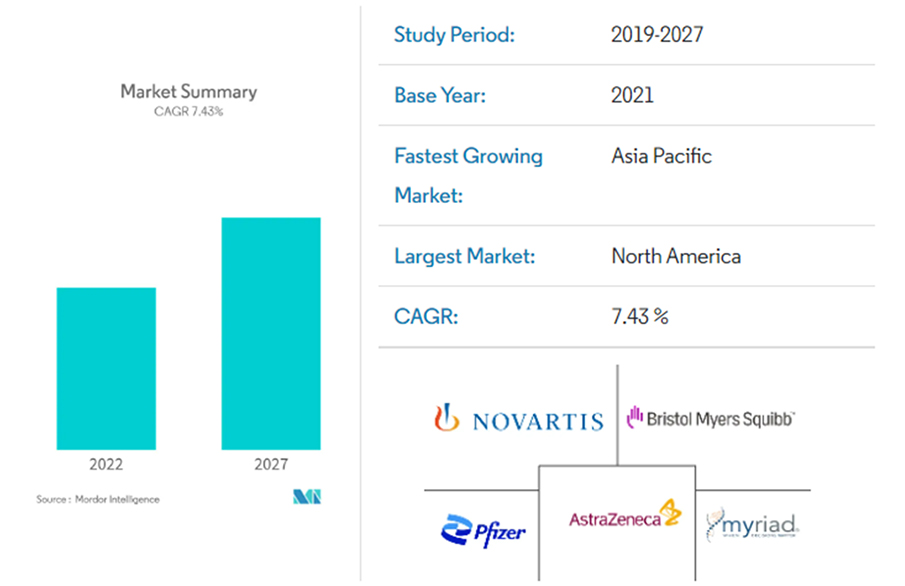


- Compound annual growth rate: 7.43 % (2022~2027)
- Global market size for pancreatic cancer: reaching 5,656.58m$ by 2027







